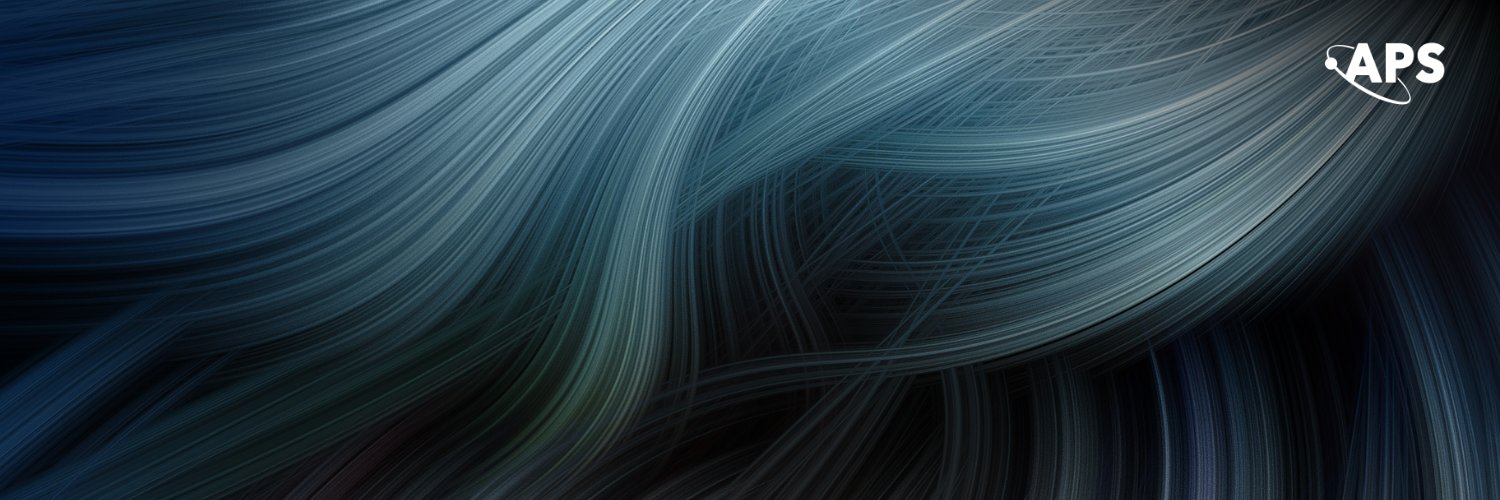
Physical Review Fluids
@PhysRevFluids
@APSPhysics journal publishing innovative research that will advance the fundamental understanding of fluids.
Take a look back at some of the outstanding papers published in PR Fluids in 2024 as well highlights from our Journal Club, the APS DFD award-winning posters and videos, and Frenkiel Award winners. (Music from #Uppbeat : go.aps.org/40VBAMC, License code: POH6OBESMHQOEGJP)
Marine larvae must settle in flows much faster than their swimming speed. Gysbers, @mark_levenstein & Juarez show that certain substrate topographies create recirculatory flows that favour settlement, helping larvae reach suitable habitats efficiently. 🔗 go.aps.org/3GjMLbA

Like static from rubbing a balloon on hair, a drop hitting a solid surface can become charged, but adding salt reduces the final charge! The process involves a balance between charging by friction and bulk discharge, and can be modeled as an RC circuit. go.aps.org/3IMz9qa

How does a rough surface affect the flow transition over a flat plate? By fully resolving roughness in 3D, simulations show that placing the surface within the laminar separation bubble delays downstream turbulence, regardless of the skewness. Read more at go.aps.org/3GY0CVt

Vortex rings can be almost perfectly reflected when approaching a water-air interface! This complex interaction is analyzed across a wide range of Froude numbers and incident angles, combining experiments, simulations, and a momentum conservation model. go.aps.org/3IIRaWp
A new constitutive law for viscous stresses in two-phase flows, derived from continuum mechanics and interface conditions, accurately captures experimental observations of exchange flows in a pipe and outperforms traditional ad-hoc models. Read more at go.aps.org/4lX9ES1

📢 PRFluids Editors' Suggestion: To navigate upwind, boats zigzag to flip the sail into its mirror shape. Simulations use a membrane and a vortex-sheet model to study which parameters cause a successful flip 🔗 go.aps.org/4eW4bbj Synopsis in Physics: go.aps.org/4lYaE7E

🚨 The PRFluids Journal Club returns on July 29th at 12:00 PM Eastern Time! This time, Valentin Dorel and colleagues will present their recent paper “Laboratory Modeling of Moist Convection Using a Reactive Fluid”, followed by a live Q&A. Register here: go.aps.org/3IzBnsS
📢 PRFluids Editors' suggestion: Convection driven by buoyancy released during moisture condensation is common in the atmosphere. Dorel et al. present a lab experiment replicating key features of moist convection and study the instabilities that develop 🔗 go.aps.org/3Fm5XVS
☁️ How does turbulent mixing affect cloud entrainment? Using the Lagrangian diffuselet model to study passive scalar mixing in a cloudy air filament, with and without phase change, shows good agreement with simulations in the early stages of the process. go.aps.org/4nK8D0G

Dead leaves drifting on surface waves align with the direction of wave propagation. Experiments and theory show that flexible floaters undergo a slow angular drift to a longitudinal orientation, caused by acceleration imbalances on crests and troughs. 🔗 go.aps.org/454dXoh

Our portfolio of peer-reviewed journals continues to rank among the top publications in physics, according to the 2024 Journal Citation Reports from @Clarivate. Click through for a look at our highlights from this year’s report. 🔗 go.aps.org/44uDyqk
📢 PRFluids Editors' suggestion: How does a droplet split between two fibers? At specific angles, near-complete transfer from one fiber to the other is possible, highlighting how soft metamaterials can be harnessed to control liquid transport. Read more at go.aps.org/40jYON0
In Leidenfrost rings, rotating and regular polygonal patterns appear spontaneously. A new model incorporating surface tension, vortices, and buoyancy-driven thermocapillary flows explains the experimental observations through cnoidal wave solutions. 🔗 go.aps.org/4llUuW5
Linear analysis is a powerful tool for understanding and predicting coherent structures in wall-bounded turbulence. Introducing an eddy-viscosity-based white-noise stochastic forcing improves its predictive capabilities across Reynolds numbers! Read more @ go.aps.org/4lMdYTy

📢 PRFluids Editors' suggestion: In light winds, windsurfing athletes pump the sail to generate propulsion and keep the board afloat. Sport-mimetic experiments study how pitching motions affect forces and performance, exploring sailing race strategies. 🔗 go.aps.org/44x77X0

In acoustofluidic simulations, zero Lagrangian and zero mass transport velocity boundary conditions are not equivalent! A new solver including spatial density variations and boundary conditions offers a framework for studying acoustofluidic phenomena. 🔗 go.aps.org/4klIm5V

A charge-neutral drop in a uniform DC electric field doesn’t migrate in free space. But place an insulating wall nearby, parallel to the field, and the drop will be laterally attracted or repelled, as shown by Sen, Firouznia, et al. Read more at go.aps.org/44vDSDZ
🗓️ From the June issue (1) go.aps.org/4lyNTqX (2) go.aps.org/3I96mMj (3) go.aps.org/44HMFE3 (4) go.aps.org/4lznPfo Find these and all other papers published in Phys. Rev. Fluids over the past month at go.aps.org/4lBifcs #fluiddynamics




Solute transport in porous media is often modeled with constant dispersivity, but is this valid for shear-thinning fluids? Al-Qenae et al. show that the viscosity varies across pore spaces, enhancing dispersion, and present a model that accounts for it 🔗 go.aps.org/45IH15F

📢 PRFluids Editors' suggestion: When a beet slice sits in its own juice, a clear fringe appears. Liu et al. trace it to a surface dimple caused by wetting-induced suction at the beet’s edge, set by the balance of surface tension, gravity and viscosity. 🔗 go.aps.org/4nkPSAR
📢 PRFluids Editors' suggestion: In debris flows, Meng et al. study the onset of roll waves and their subsequent coarsening, explaining field measurements in Switzerland. Read the paper at go.aps.org/4nAmvL9 , also featured in @PhysicsMagazine @ go.aps.org/40kvfL7